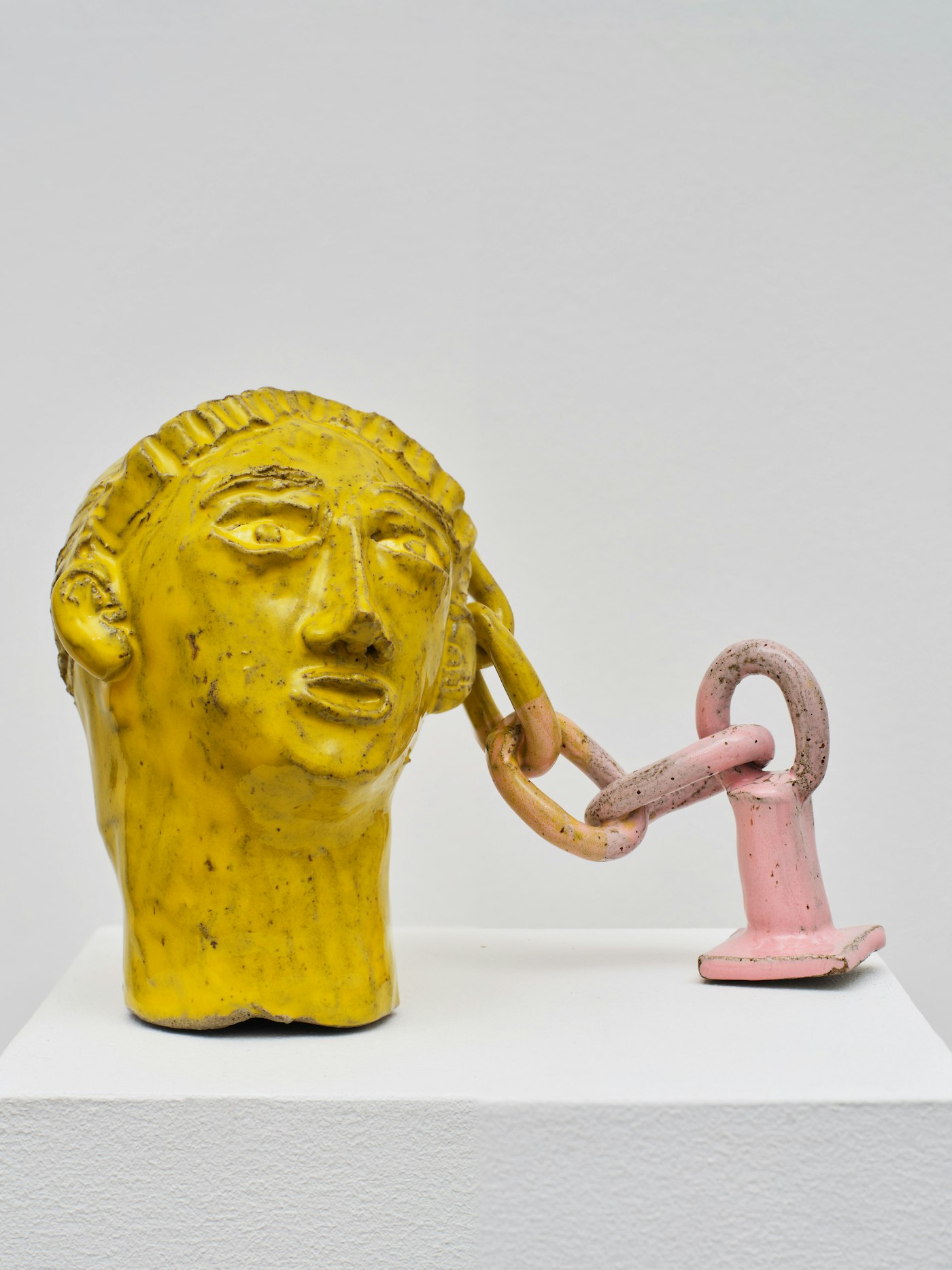Narrow is the Path
Harry Anderson was born 1986 in Stockholm, Sweden. MFA – Royal Danish Academy of Fine Arts, Copenhagen, Denmark (2019).
The exhibition presents a suite of new ceramic works. Together the sculptures form a tide of faces and expressions that move between reality and dream, where the evocative presence of the sculptures reveal an emotional drama. Feelings of hope, love and lust are distorted into looks of despair, desperation and sadness. On narrow shelves along the walls of the gallery, a myriad of sculptures move in tandem; a slow dance, with their gaze turned towards the exhibition space in various angles.
Harry Anderson explores ideas of routine and repetition, via the works in the exhibition. Anderson asks himself the question; what happens when restriction, limitation and structure are allowed to govern his own consciousness? Based on a biblical expression, the artist found the source and title of the exhibition. Narrow is the Path informs us on how entry and the path to a true, wholesome life is narrow, difficult to navigate, while the path to hell is broad and easily accessible.
The suite of ceramic works is the result of the artist's own relationship to strict routine and repetition. The narrow path lies all too close to Anderson's relationship to life, where this strictness and boundaries create both a shield and a threat to the artist’s absolute freedom. A delicate balancing act between control and chaos. It is in these spaces, the in-between that Anderson finds his breaking point, where the gaze, his contemplation begins to seek out undiscovered elements and phenomena. When that order changes, an unpredictable moment occurs, where minimal change leaves an imprint on time and space. The sculptures, in their form and ornamentation, reflect these unattainable shifts.
Harry Anderson's visual world moves between Surrealism's relationship to dreams, American folk art, and the mythologies and traditions of antiquity. Poetry and lyricism are frequently reflected in the sculptures. In the work After the Swan, the artist interprets the mythological story of "Leda and the Swan", based on W.B. Yeats' poem of the same name, where the god Zeus seduces and rapes the queen disguised as a swan.
Harry Anderson's imagery looks towards the artistry of Philip Guston, Sam Doyle, Jan Håfström and Hans Wigert. In the work For D.B, the flower is a symbol for the memory of the American artist Donald Baechler. His imagery, where naivety meets melancholy, is reflected in Anderson's artistic ideas and processes. Harry Anderson's exhibition presents the encounter between art historical references and contemporary phenomena and events. Together they reveal artistic dedication and devotion to the concepts of freedom, as well as restraint and desire.
ARTWORK
PRESS
22.01.2025
Odalisque Magazine ↗Natalia Muntean
25.01.2025
Dagens Nyheter ↗Magnus Bons
